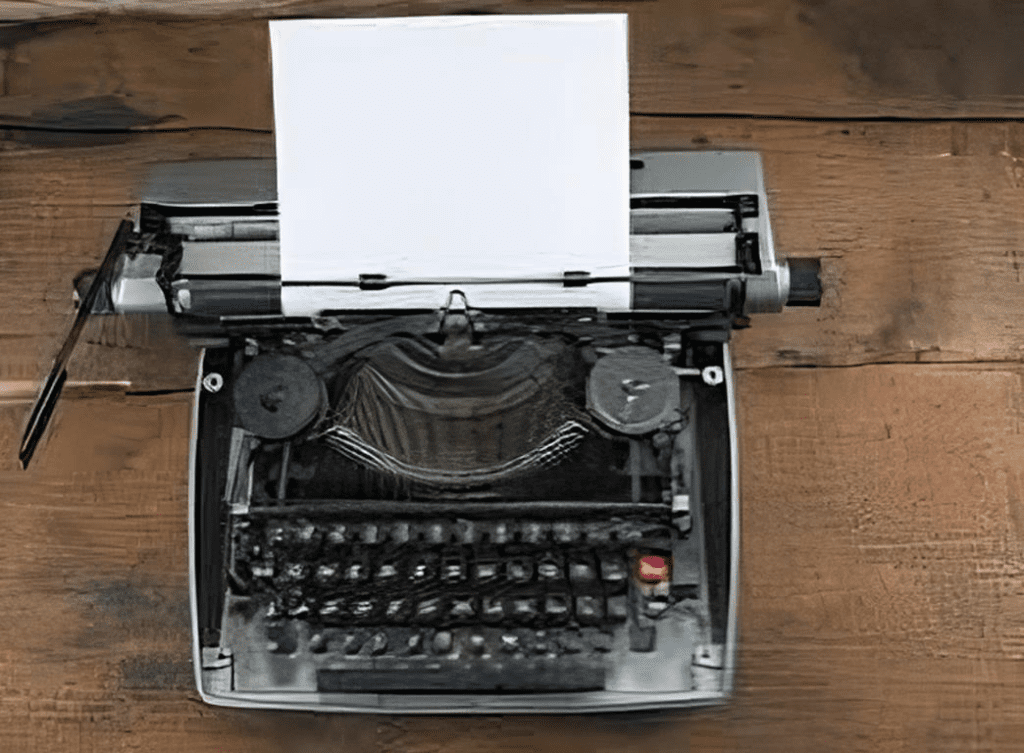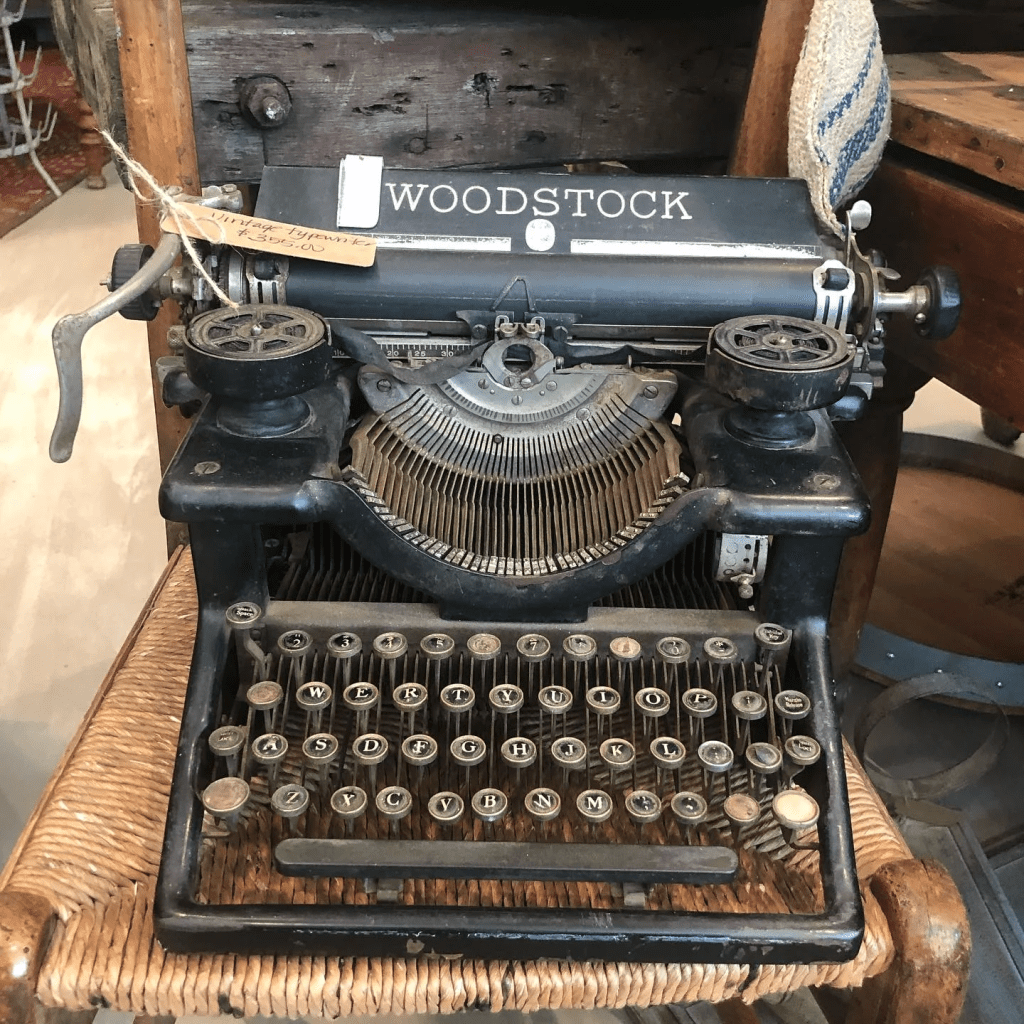In a world dominated by sleek laptops and digital screens, the humble typewriter stands as a relic of a bygone era, yet it continues to captivate writers and enthusiasts alike. This vintage machine, with its clacking keys and tangible connection to the written word, holds a special place in the hearts of many. Why does the typewriter still hold such appeal, and what makes it relevant even in today’s digital age? Let’s dive into the history, impact, and enduring charm of the typewriter.
A Brief History of the Typewriter

The story of the typewriter dates back to the early 19th century. Inventors around the world experimented with various designs, striving to create a machine that could reproduce text mechanically. The first commercially successful typewriter, known as the Sholes and Glidden typewriter, was introduced in 1874. This machine, developed by Christopher Latham Sholes, became the foundation for future typewriters and even introduced the QWERTY keyboard layout we still use today.
Over the decades, typewriters evolved, becoming essential tools for journalists, writers, and office workers. Their popularity surged in the 20th century, with brands like Remington, Underwood, and Royal producing reliable, beautifully designed machines that became fixtures on desks worldwide.
Why the Typewriter Endures in a Digital Age
Despite technological advances, the typewriter retains a dedicated fanbase. What is it about this antique machine that continues to draw people in? Let’s explore some key reasons for its timeless appeal.
- A Physical Connection to Words
Unlike digital keyboards, a typewriter requires effort to press each key. This tactile feedback creates a physical connection to the words appearing on the page, making the writing process feel more intentional and immersive. Many writers believe that typing on a typewriter slows them down, encouraging thoughtfulness and focus on every sentence. - Freedom from Digital Distractions
In today’s hyperconnected world, distractions are just a click away. Notifications, emails, and social media can easily pull us out of a creative flow. A typewriter, on the other hand, offers an entirely offline experience. It’s just you, the keys, and the page—a pure, distraction-free environment that can enhance productivity and creativity. - Aesthetic Appeal and Nostalgia
The typewriter is a beautiful object, often seen as a piece of functional art. From their intricate mechanisms to their elegant designs, vintage typewriters evoke a sense of nostalgia. Many enthusiasts collect them not just for writing but as decorative pieces that bring character and charm to any room. The sight of a typewriter instantly recalls an era when writing was both an art and a craft.
The Unique Experience of Writing on a Typewriter
Writing on a typewriter isn’t just about producing words—it’s about the experience. Each key press creates a distinctive “clack,” and the satisfying “ding” when you reach the end of a line is both motivating and rewarding. Here’s what makes the typewriter experience truly unique.
- Mistakes Become Part of the Journey
Unlike word processors, a typewriter doesn’t allow for backspacing or easy corrections. Mistakes are part of the process, and each typo or correction tells a story of the writer’s journey. Some writers find that this imperfection adds authenticity to their work, making the final product feel raw and unfiltered. - A Slower, More Thoughtful Process
The typewriter’s mechanics encourage a slower pace. Typing requires deliberate effort, which often leads writers to think carefully about their word choices and sentence structure. This slower process can be meditative, helping writers connect more deeply with their thoughts and ideas.
Typewriters as Collectors’ Items and Decor
In recent years, vintage typewriters have found a place in homes as collector’s items and decorative pieces. The market for typewriters has surged, with enthusiasts seeking out models from iconic brands. Collectors value typewriters not only for their historical significance but also for their craftsmanship. Each machine tells a story, and owning one can feel like holding a piece of literary history.
Moreover, typewriters have become popular decor items, adding a touch of nostalgia to modern spaces. Many people place typewriters on desks, bookshelves, or side tables as a tribute to the art of writing. The presence of a typewriter can inspire creativity and serve as a conversation piece, sparking curiosity and admiration.
How Typewriters Can Enhance Creative Writing

For writers, poets, and artists, typewriters offer a unique creative tool. The lack of digital editing tools means that every word must be carefully considered before committing it to the page. This intentional approach to writing can lead to deeper creative exploration and a more thoughtful, authentic voice.
- Focus on Flow Over Perfection
Without the ability to easily delete or revise, writers on typewriters are more likely to focus on the flow of their thoughts rather than perfecting each line. This can lead to more organic, stream-of-consciousness writing that feels raw and real. - Encouraging Experimentation
Typewriters offer a safe space for experimentation. Since editing is more challenging, writers often allow themselves to explore unusual ideas without self-censorship. The permanence of each line encourages a bolder, less inhibited approach to creativity.
Typewriters in Modern Media and Pop Culture
Typewriters have made a notable comeback in modern media and pop culture. They frequently appear in movies, TV shows, and even music videos, often symbolizing creativity, intelligence, and a connection to the past. For instance, the classic “click-clack” sound of a typewriter is often used to evoke a sense of nostalgia or signal that a character is a writer or journalist. This media presence keeps typewriters relevant, reminding us of their enduring impact.

Beyond their appearance in entertainment, typewriters have become icons of retro style, often featured in social media posts and digital art. For many, the typewriter represents an escape from the fast-paced, technology-driven world—a reminder of a simpler time when writing was a slower, more intentional act.
Conclusion: The Lasting Legacy of the Typewriter
The typewriter is more than just a tool—it’s a symbol of creativity, resilience, and the power of words. In a world where technology advances at breakneck speed, the typewriter offers a comforting, tactile experience that connects us to the roots of written expression. Whether used as a creative tool, a collector’s item, or simply a beautiful piece of decor, the typewriter continues to captivate people with its charm and history.
For writers, it’s a reminder to slow down, embrace imperfections, and focus on the joy of creating something meaningful. The next time you see a typewriter, take a moment to appreciate its legacy. After all, it’s not just a machine—it’s a timeless artifact that celebrates the art of writing in its purest form.


